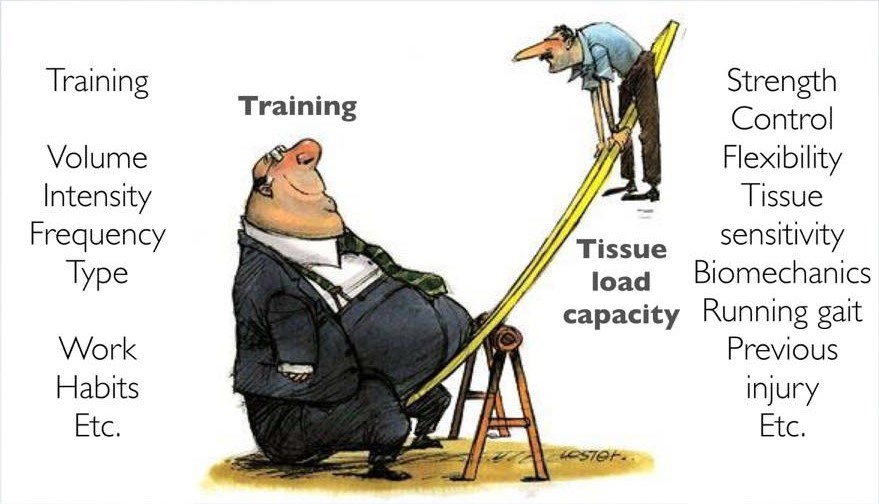Running season is fast approaching for road runners. I’ve just started my 14wk block for the Half Marathon in May along with other individuals, groups, highly experienced runners, beginners and everything in between.
Overload is thought to be the main cause of 80% of running injuries (Depending on what study you read)
So how much running is too much?
I’ve had a look at what training plans are available and some involve a LOT of running – they are scary to look at! Having you run 4, 5 or 6 times a week is a lot for some. The progressions in pace and distance are aggressive and general. You need a solid base to be able to handle that much running. Too often a runner will go from running once or twice a week, to all of a sudden 4-5 times per week – because that’s what the training plan says. What do you think might happen? It’s a huge spike in training and usually results in overload.
The majority of injured runners I see in the clinic progress too quickly or don’t have a base.
It’s easy to get over excited with charity groups, running with friends or weight loss goals. This results in midseason niggles and chasing their tail. Playing catch up on missed sessions is dangerous- it usually results in re-injury. Quite often they will wrap themselves in band aides and anti-inflammatories just to make it too the start line!
Check out this infographic from Tom Goom in regards to load management (It also highlights other considerations).
FINDING THE RIGHT BALANCE

(Infographic Courtesy of Tom Goom)
Getting the balance right is key. Following a strict training plan and ignoring other factors is dangerous. Everyone’s load capacity is different (hence why we don’t all follow the same running plan). The above highlights how complex it can be.
The good news is our bodies can adapt!
As long as the capacity to adapt isn’t outweighed by the load placed upon it.
I personally had a serious ankle injury last year at touch footy. I had to start again with my running from ground zero. I’m talking very short runs (3 mins on, 1 min off and repeat). It took me 6 months to get my base back and you can’t rush these things. I can now run 70 mins continuously and have a solid base for Half Marathon training.
In summary –
- Don’t forget your base – It’s a program on its own. You should be able to run 10km before starting a half marathon plan
- If you don’t have a good base -listen to your body, not your training plan.
Build slowly, 10% of total running per week (time not distance). Add speed work gradually.
You are better off standing on the start line of a race niggle free, than you are on anti-inflammatories wondering if that niggling tendon will make the distance.
Phillip de Mestre
Sports Podiatrist and Runner – Running Science
